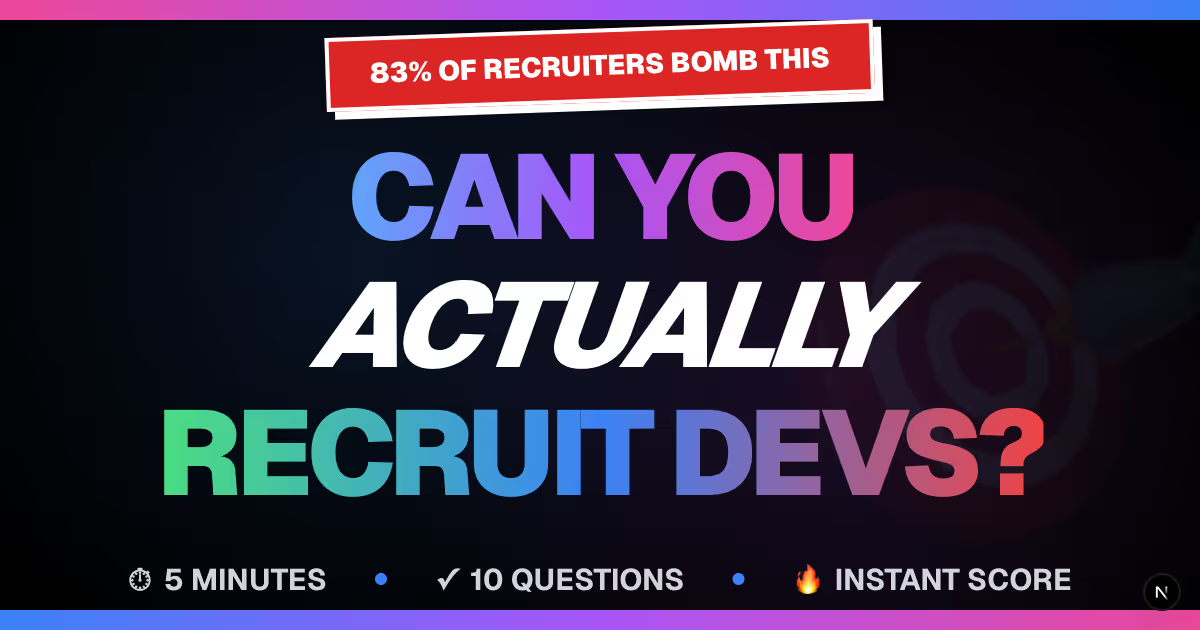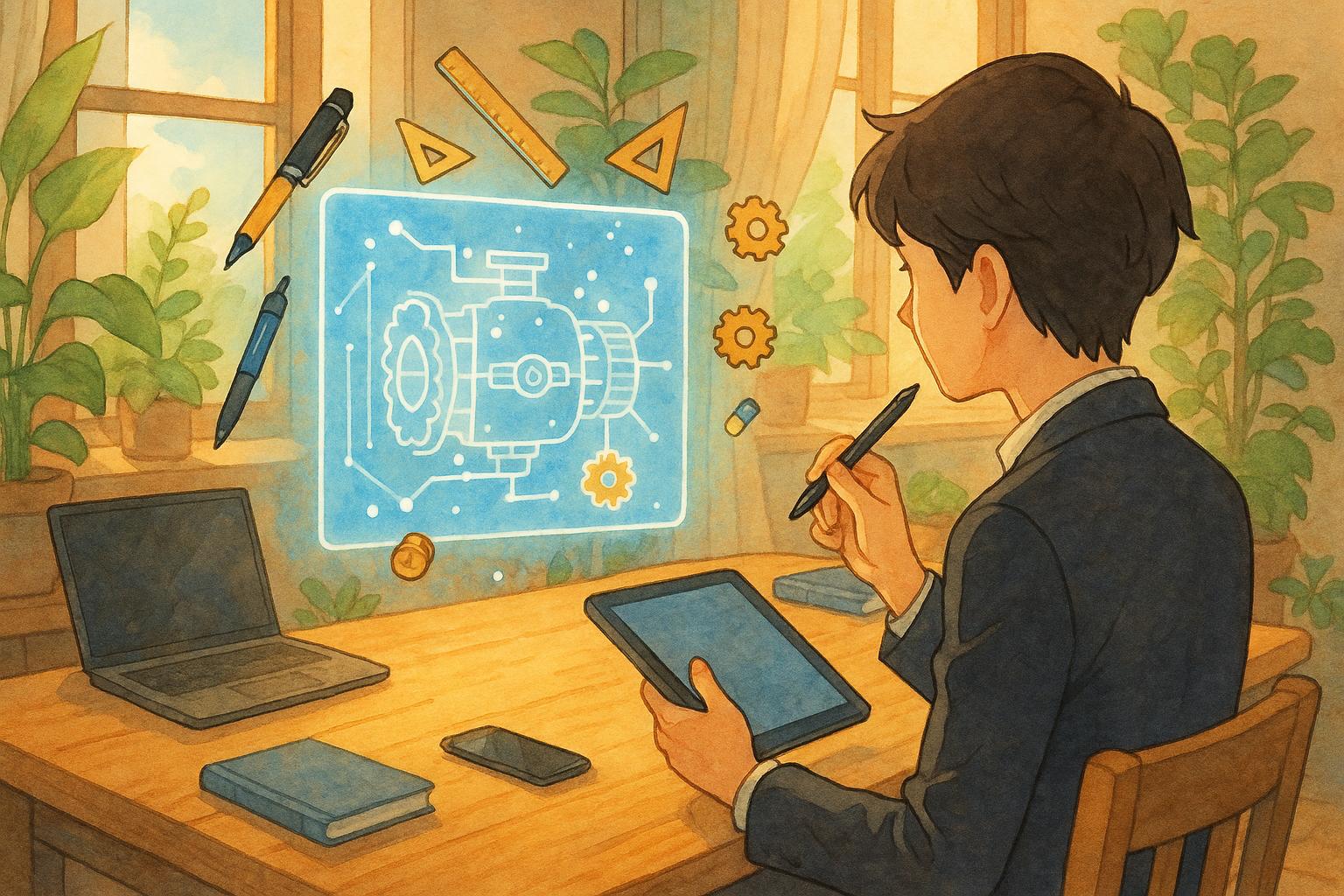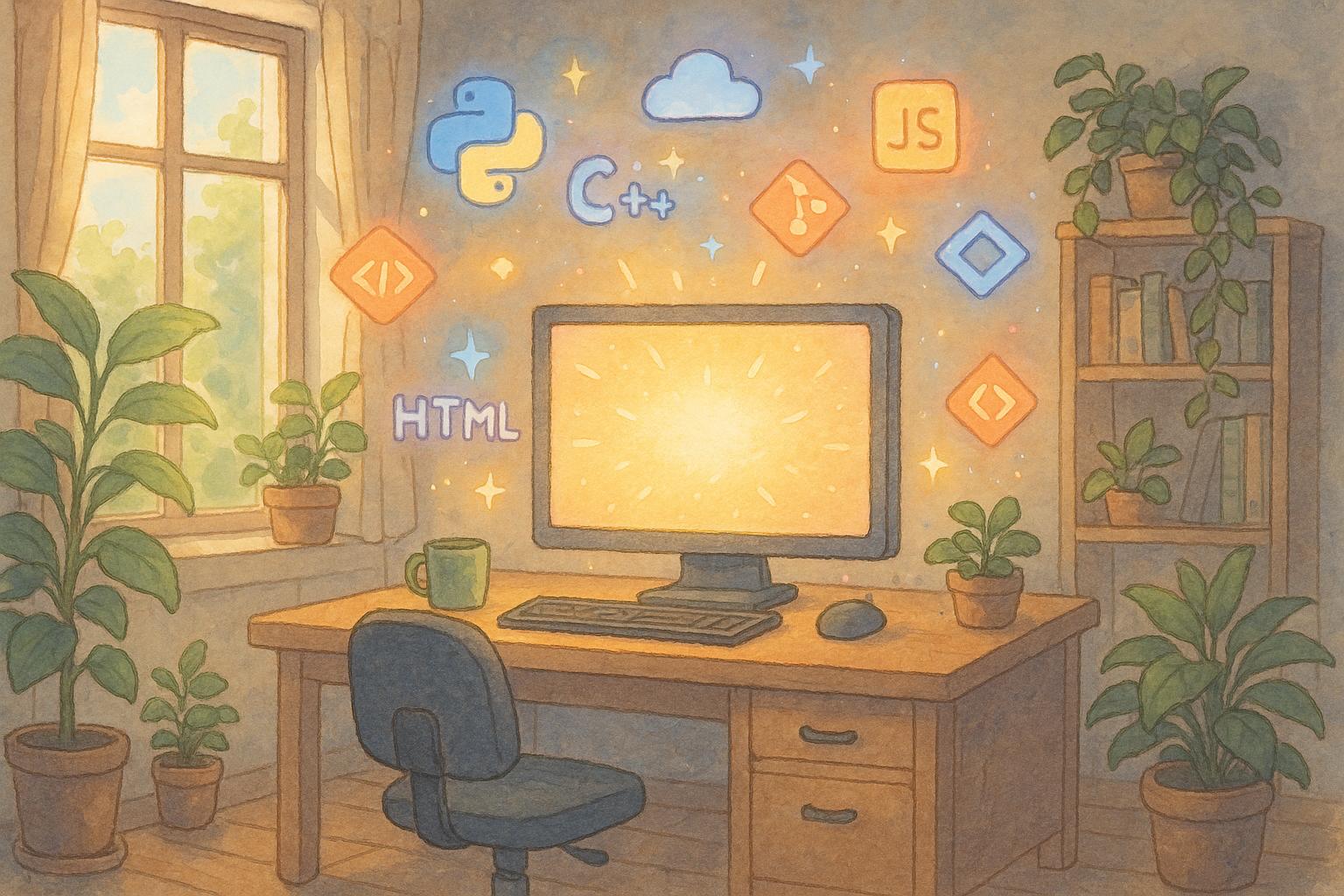


Learn effective strategies to retain top engineering talent in competitive markets by fostering a supportive and growth-oriented workplace culture.
By 2025, one in three engineering roles will remain unfilled. That’s a stark reality for companies struggling to keep their best talent. Losing top engineers isn’t just about hiring costs - it disrupts projects, delays innovation, and impacts team morale.
Here’s the solution: Focus on creating a work environment where engineers feel valued, challenged, and supported. This includes:
- Building trust through transparency and psychological safety.
- Recognizing contributions and giving engineers autonomy over their work.
- Providing growth opportunities with clear career paths, mentorship, and internal mobility.
- Preventing burnout with flexible work arrangements and balanced workloads.
- Using data to predict and address retention risks before they escalate.
Retention is not just about keeping employees - it’s about creating a workplace where engineers want to stay and thrive. Let’s dive into the strategies to make it happen.
Building a Strong Engineering Culture
With rising attrition rates, creating a strong engineering culture has become more crucial than ever. When engineers feel valued, trusted, and empowered, they tend to stay longer and contribute more effectively to organizational success. A telling statistic: 94% of engineers say they would stick around if their companies prioritized learning and development. Organizations that nurture a culture of learning see retention rates jump by 30-50%.
To build this kind of culture, focus on three core areas: fostering psychological safety, recognizing achievements while promoting autonomy, and establishing structured mentorship and feedback systems.
Creating Trust and Psychological Safety
Psychological safety is the foundation of a thriving engineering team. It gives engineers the freedom to take risks, voice concerns, and propose bold ideas without fear of backlash. When this safety net exists, innovation flourishes.
Building trust starts with leadership transparency. Share your company’s goals, challenges, and decision-making processes openly with your engineering teams. When engineers see the bigger picture, they feel more connected to the mission and are more likely to contribute proactively.
Encourage open discussions during team meetings and code reviews. Create an environment where engineers can question decisions, suggest alternatives, and tackle challenges without fear of judgment. Equip managers with the skills to handle constructive pushback gracefully.
Normalize failure as part of the learning process. When a project doesn’t go as planned, focus on the lessons learned and how they can be applied moving forward. This approach not only builds resilience but also encourages experimentation.
Recognition and Autonomy for Engineers
Engineers thrive when their work is appreciated and they have the freedom to approach tasks in their own way. Recognition doesn’t always have to come with monetary rewards - sometimes, a simple public acknowledgment of technical achievements or creative solutions can have a lasting impact.
Introduce peer recognition systems to spotlight great work. For example, you could host technical talks, publish internal blog posts, or organize team showcases where engineers can share their accomplishments with a broader audience.
Autonomy is equally important. Allow engineers to make decisions about their tools, methodologies, and approaches within reasonable boundaries. When they have ownership over their work, they feel trusted and more invested in the outcomes.
Steer clear of micromanagement. Instead, set clear objectives and let engineers determine how to achieve them. Regular check-ins should focus on clearing roadblocks and offering support, not scrutinizing every detail of their progress.
Setting Up Mentorship and Feedback Systems
Mentorship and feedback are essential for an engineer’s growth and long-term commitment. The most reliable indicator of an engineer’s tenure is whether they feel they are learning and advancing. When that stops, they start looking elsewhere. A 2022 Harvard Business Review study also found that 38% of engineers cited poor technical leadership as their top reason for leaving.
Develop structured mentorship programs that pair junior engineers with senior leaders. These relationships should go beyond technical guidance to include career development, navigating company dynamics, and building connections. Mentors can answer questions, provide context for projects, introduce key stakeholders, and advocate for their mentees’ growth.
Identify those engineers who naturally attract and inspire others - sometimes referred to as "honeybee" talent magnets - and involve them in mentorship or sponsorship roles.
Establish regular two-way feedback loops. Engineers should receive constructive input on their work while also being encouraged to share their own feedback. This approach fosters continuous improvement and helps address issues before they escalate into larger problems.
Feedback should be timely, actionable, and specific. Don’t wait for annual reviews - offer feedback throughout project milestones or during code reviews. Address both technical skills and career aspirations, helping engineers see how their current efforts align with their long-term goals.
Managers need to prioritize mentorship by dedicating time to it and recognizing its importance during performance evaluations.
Investing in a supportive and empowering culture pays off in multiple ways. Engineers who feel engaged and appreciated are more likely to stay and become enthusiastic advocates for your company. Their positive experiences can attract additional talent through their networks, creating a ripple effect of growth and innovation. These cultural efforts lay the groundwork for the retention strategies that follow in the next section.
Career Growth and Internal Mobility
Engineers thrive when they have clear and attainable career paths. Without these, they’re more likely to look for opportunities elsewhere. To improve retention, companies should offer multiple avenues for advancement, allowing engineers to grow both upward and laterally within the organization.
Flexible Career Paths and Options
While traditional career ladders suit some engineers, others prefer more flexible routes. Instead of focusing solely on upward promotions, consider a career lattice approach that allows movement across teams and specializations.
For those who want to deepen their technical expertise, offer senior technical tracks that focus on leadership in areas like architecture, decision-making, and mentoring - without requiring them to take on managerial responsibilities. This lets engineers excel in their craft without the added pressure of administrative tasks.
Some engineers may want to explore different facets of their field. For instance, a backend engineer might be curious about machine learning, or a mobile developer might want to dive into DevOps. Supporting such cross-functional moves keeps engineers engaged and helps them develop a broader skill set that benefits the entire company.
To make these paths actionable, provide clear frameworks that outline the skills and responsibilities required for each role. When engineers know exactly what they need to achieve their goals, they’re more likely to commit to growing within your company.
Frequent career discussions are also essential. Instead of limiting these conversations to annual reviews, consider monthly or quarterly check-ins. Regular touchpoints allow managers to understand an engineer’s aspirations and provide timely support for their development.
Pair these career pathways with continuous learning opportunities to ensure long-term growth.
Continuous Learning Opportunities
Flexible career options are only effective when paired with ongoing learning. Engineers need to stay ahead of evolving technologies, and companies that invest in their professional development often see higher retention rates. Offering both structured and informal learning opportunities ensures that personal growth aligns with business goals.
Start by implementing training programs that cover both foundational skills and emerging trends. Partner with online platforms to give engineers access to courses, certifications, and hands-on labs. Dedicate work hours for learning to show that skill development is a priority.
Encourage engineers to attend conferences and industry events. These gatherings expose them to fresh ideas and help them expand their professional networks. Budget for major conferences and ask attendees to share their insights with the team afterward.
Internal knowledge-sharing sessions are another great way to build expertise. Engineers can present tools, techniques, or technologies they’ve discovered, which not only strengthens the team but also helps them develop leadership and presentation skills.
Certification programs, whether focused on cloud platforms, programming languages, or specialized tools, can boost both confidence and team capabilities. Recognizing these achievements and reimbursing certification costs further reinforces the company’s commitment to growth.
Consider implementing innovation time - similar to Google’s 20% time policy - where engineers can explore new technologies, work on passion projects, or contribute to open-source initiatives. This freedom often leads to exciting discoveries and keeps engineers motivated.
Beyond learning, creating smooth pathways for internal mobility ensures that engineers can grow without needing to leave the company.
Internal Job Movement and Transfers
Simplifying internal transfers can help retain talented engineers who are ready for new challenges. It’s also more cost-effective than external hiring and preserves institutional knowledge.
Encourage cross-team rotations and prioritize internal job postings so engineers can easily explore new roles within the company.
Temporary assignments can serve as a trial run for permanent moves. For example, an engineer interested in data science could take on a three-month project with the analytics team to see if it’s the right fit.
Make the internal transfer process straightforward. Managers should actively support their team members’ career goals, even if it means losing them to another department. This approach demonstrates that the company values employee development over rigid team structures.
Shadow programs are another effective tool. By spending time with different teams, engineers gain a better understanding of various roles, making it easier to make informed career decisions while fostering cross-functional collaboration.
Finally, track internal mobility metrics to gauge the success of these initiatives. Monitor how many engineers move to new roles internally versus those who leave the company. Collect feedback from employees who’ve made transitions to refine your strategies and ensure career growth remains a core part of your company culture.
When engineers see colleagues successfully moving into new roles and advancing their careers, it reinforces the idea that your organization is a place where long-term growth is not just possible but actively encouraged. Aligning career paths, learning opportunities, and internal mobility creates an environment that nurtures and retains top engineering talent.
Using Technology and Analytics for Retention
Modern companies are turning to data and predictive analytics to refine their retention strategies. Instead of waiting for exit interviews to figure out why engineers leave, forward-thinking organizations use technology to identify potential flight risks early and take proactive steps to keep their talent engaged.
Retention Analytics and Feedback Tools
Employee engagement surveys and pulse tools are invaluable for understanding team satisfaction and spotting potential issues before they escalate. These tools, which regularly track metrics like job satisfaction, workload, and career concerns, often reveal patterns that traditional annual reviews might overlook.
Performance and collaboration analytics can also provide early warnings. For instance, if an engineer's code contributions drop, their participation in meetings dwindles, or they disengage from critical review processes, these changes could signal dissatisfaction or burnout. By combining historical exit data with predictive analytics, companies can better identify employees who might be considering leaving.
Tools like daily.dev Recruiter help recruiters connect with pre-qualified engineers through warm, double opt-in introductions. This approach fosters trust and ensures that conversations are based on genuine mutual interest.
Real-time feedback systems integrated into development workflows are another powerful resource. By gathering insights during sprint retrospectives or through other feedback channels, organizations can catch and address issues as they arise. These analytics pave the way for AI-driven attrition prediction, offering a proactive approach to retention.
Predicting Attrition with AI
Artificial intelligence is changing the game for retention by shifting the focus from reactive measures to predictive strategies. Machine learning analyzes diverse data points - such as performance reviews, promotion timelines, and changes in work habits - to flag employees who may be at risk of leaving.
Predictive models often look at key factors like time since the last promotion, salary competitiveness, and project satisfaction. When these elements align in certain ways, the system can identify employees who might need targeted retention efforts.
Behavioral analytics also play a critical role. For example, an engineer who typically works late but starts leaving earlier, or someone who stops volunteering for challenging tasks, may be showing early signs of disengagement. Natural language processing adds another layer by analyzing communication patterns to detect shifts in sentiment.
The real strength of AI-driven retention lies in its ability to enable early intervention. Once an at-risk employee is identified, managers can implement tailored strategies - whether that means offering career growth opportunities, adjusting workloads, or assigning more engaging projects. These insights empower companies to take meaningful action to retain their top talent.
Connecting with Engineers on Developer Platforms
Developer platforms offer a unique way to engage engineers in spaces they trust. Platforms like daily.dev Recruiter are designed to connect with engineers where they consume technical content and seek professional development.
Warm introductions through these platforms often lead to better matches and longer tenures. Engineers who find opportunities in environments they value are more likely to join companies that align with their personal and professional aspirations.
Accessing pre-qualified talent pools also reduces the chances of hiring mismatches, which can lead to early departures. Transparent, context-rich job matching helps candidates understand not just the role, but also the team dynamics, technical challenges, and growth opportunities they can expect. This level of clarity sets the stage for realistic expectations and stronger retention.
The double opt-in process further ensures that both recruiters and candidates are genuinely interested in exploring opportunities. This creates a foundation for honest conversations about career goals, compensation, and team fit. By leveraging these connections, companies can build relationships with engineers on platforms they already trust, reinforcing retention from the very beginning.
sbb-itb-d1e6221
Solving Common Retention Problems
Even with solid strategies in place, tech companies often encounter unexpected challenges in retaining top engineering talent. These problems can catch organizations off guard, but addressing them head-on can mean the difference between losing key players and building a dependable, long-term team.
Handling Counteroffers and Poaching
Retention isn’t just about metrics - it’s about navigating real-life challenges. When engineers receive competing offers, it’s often a sign of deeper issues, like feeling undervalued, lacking growth opportunities, or being under-challenged. These situations are a chance to engage in honest conversations about their career ambitions and concerns. Highlight the growth opportunities and shared mission that your company offers, which should already be part of your broader retention strategy.
To go further, ensure regular compensation reviews and provide long-term incentives like equity, retention bonuses, or sabbaticals tied to tenure. But remember: financial perks only go so far. They’re most effective when paired with meaningful work and a strong sense of belonging within the team.
Preventing Burnout with Flexible Work
Burnout is a major issue in the tech world, and flexible work arrangements have shifted from being a perk to an absolute necessity. True flexibility means more than just remote work - it’s about letting engineers work during the hours when they’re most productive, whether that’s early in the morning or late at night.
Keep an eye on work hours and intensity. Introduce practices like “no meeting” days or dedicated focus blocks to help engineers manage their workload. Rotating on-call responsibilities and offering recovery time after high-pressure periods can also go a long way in maintaining morale and energy levels.
Fighting Career Stagnation
Feeling stuck is one of the quickest ways to lose talented engineers. Many are naturally driven to learn and grow, so when their work becomes repetitive or lacks opportunities for advancement, they’re likely to start seeking new challenges elsewhere.
To combat this, establish clear technical career tracks - like Staff, Principal, or Distinguished Engineer - that provide room for growth without forcing a shift into management roles. Offering a variety of projects and opportunities for cross-team collaboration can also keep their work engaging and expand their skill sets.
Frequent career conversations - not just during annual reviews - are key. Use these discussions to understand their goals, interests, and areas for development. Combine external learning opportunities, like conferences or online courses, with hands-on projects to show your commitment to their professional growth. These efforts not only keep engineers engaged but also strengthen their connection to the company for the long haul.
Building a Long-Term Retention Strategy
Keeping top engineering talent requires more than just a one-time effort - it’s an ongoing commitment. The best companies prioritize retention as a continuous process, adapting their approach to meet the changing needs of their teams and the market. Below are some key practices for tech recruiters and hiring managers to build a retention strategy that lasts.
Key Steps for Tech Recruiters and Hiring Managers
Retention starts the moment an engineer joins your team - and every interaction matters. By focusing on a strong engineering culture and practical retention tactics, companies can create an environment where talent thrives.
Recognition and autonomy go hand in hand. Engineers want to feel ownership of their work and see their contributions acknowledged. This could mean letting them choose their tools, shape technical decisions, or understand how their efforts tie into the company’s broader mission. Recognition doesn’t always have to come with a paycheck; a public shoutout for a well-executed solution or a successful project launch can be just as meaningful.
Career growth should never feel static. Engineers need to see clear paths forward, whether that’s advancing to a Staff Engineer role, exploring new product areas, or mentoring junior colleagues. Flexible growth opportunities help keep team members engaged and motivated.
Leverage data to make smarter retention decisions. Use tools like pulse surveys, exit interviews, and metrics such as internal mobility rates to uncover patterns before they escalate into problems. But the real power lies in acting on this data - not just collecting it.
When issues like counteroffers, burnout, or stagnation arise, treat them as signals of deeper challenges. A counteroffer might highlight gaps in career development or compensation. Burnout could point to uneven workloads or insufficient downtime. Career stagnation often signals a lack of challenging projects or unclear advancement opportunities. Addressing these underlying causes strengthens retention efforts in the long run.
The Need for Continuous Improvement
Retention strategies aren’t static - they need to evolve as market conditions and employee expectations change. Regular reviews, ideally on a quarterly basis, help ensure your approach stays effective. This includes gathering feedback from new hires, long-time employees, and even those who’ve left the company.
The tech industry is especially dynamic, and retention strategies must adapt accordingly. When demand for engineering talent is high, companies might need to focus on aggressive retention tactics like competitive compensation and career development. During slower periods, the emphasis could shift to internal growth opportunities and long-term planning.
Tailored career growth options are key to keeping engineers engaged. Some are driven by learning new technologies, others by solving complex problems, and others by the impact their work has on users. Understanding these individual motivations allows you to create personalized opportunities that align with their goals.
Finally, retention isn’t just the responsibility of recruiters and hiring managers. It’s a team effort. Engineering managers, senior engineers, and even peers all play a role in building a workplace where people want to stay. When everyone contributes to creating an environment where engineers can grow and do their best work, retention becomes part of the organization’s culture.
FAQs
How can companies create a strong engineering culture to retain top talent in competitive markets?
To create an engineering culture that not only attracts but keeps top talent, companies need to focus on aligning their teams around a clear mission, shared values, and specific goals. Open communication and transparency about the company’s direction play a big role in building trust and keeping employees engaged. Celebrating achievements and showing how individual efforts contribute to the company’s bigger picture can also go a long way in boosting team morale.
Offering meaningful opportunities for career growth, promoting teamwork, and encouraging ongoing learning are essential for keeping engineers motivated. On top of that, emphasizing culture fit, inclusion, and organizing team-building activities helps create a workplace where employees feel genuinely valued and supported.
How can companies use predictive analytics and AI to identify engineers who might leave, and what steps can they take to keep them engaged?
Predictive analytics and AI dig into employee data - like engagement levels, performance patterns, and work history - to pinpoint engineers who might be considering a move. By catching these signals early, companies can step in and work on keeping their best talent.
When these potential risks are flagged, it’s time to act. Strategies such as customized career growth plans, adjusting compensation to stay competitive, or offering flexible work options can make a big difference. Adding regular one-on-one meetings and reinforcing a sense of purpose within the team can also go a long way toward improving retention.
What are the advantages of offering flexible career paths and internal mobility for engineers, and how can companies successfully implement these strategies?
Offering dynamic career opportunities and promoting internal mobility can significantly enhance job satisfaction, reduce turnover, and attract skilled engineers. When employees see that their growth is valued, they’re more likely to stay committed and loyal to the company.
To make these strategies work, businesses should focus on setting up well-defined career progression plans, offering training programs to build skills, and establishing mentorship opportunities. Creating a workplace culture where employees feel encouraged to explore new roles or develop diverse skill sets allows engineers to advance both horizontally and vertically. This approach not only supports individual growth but also strengthens the organization overall.
Related Blog Posts








